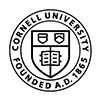Distal Femoral Osteotomy
Description:
A distal femoral involves a surgical cut of the bone at bottom of the femur. Generally, a hinge of 8-15 mm is made to improve the alignment and offset potential issues of the knee. Usually bone graft, plates, and screws are used to hold open the distal femoral osteotomy. Some distal femoral osteotomies involve taking out bone where you let the leg compress on itself, this is called a closing wedge distal femoral osteotomy. Most osteotomies done are opening wedge as previously described.
Distal Femoral Osteotomy Animation
Indications:
There are a number of different indications for a distal femoral osteotomy. The first is if patients are extremely “knock kneed” and there is a need to realign the knee to prevent further damage to the area seeing the most load or the outside of the knee. The second is in patients who have arthritis on the outside of the knee and are too young for a standard partial knee replacement. Also, partial knee replacements of the outside of the knee do not last as long versus inside partial replacement so there is even more reason to consider distal femoral osteotomy compared to knee replacement. Generally, these patients are younger than 55 years old. If patients have “knock kneed” knees and arthritis this can be a very effective surgery and delay the need for a knee replacement. This realignment moves the force on the arthritis part of the knee to the normal part. The final patient type is very young patients who need cartilage, ligament or meniscus transplant procedures with alignment issues. This surgery is very successful in these cases and can dramatically improve success of these procedures if done in conjunction. For the meniscus and cartilage transplant patients “realigning” the knee can increase the healing of the transplant and improve survival
How do you determine if you need an osteotomy?
Dr. Garcia will take limb alignment films to identify have much correction is needed. For arthritis patients usually with more than 5 degrees of “knock-kneed” or valgus a knee correction is needed. For cartilage patients the cut off is slightly lower at 3-4 degrees of valgus. Once this is indicated, Dr. Garcia will discuss when this portion of the surgery will occur, or if a separate surgery is needed.
What are the complications?
The main complications are listed below:
- Stiffness
- Non Union (does not heal)
- Pain from the plate
- Bleeding
- Infection
The most worrisome complication is that the boney cut does not heal. While this is very uncommon, putting weight on it before Dr. Garcia instructs you, high BMI or smoking can increase this risk.
Dr. Garcia’s technique for distal femoral osteotomy
What are the outcomes of distal femoral osteotomy?
In general, this is a successful procedure if done for the right indications. For those with arthritis the success rates are 75% patients at 10 years are pain free and do not undergo knee replacement. Additionally, compared to knee replacement patients are allowed to participate in much more rigorous activities. Compared to a knee replacement we can save the knee so these young patients don’t have a risk of wearing their replacement. For younger patients with ligament and cartilage surgeries the success rate is much high as 90% at 10 years and these procedures in young patients can last upwards of 20 years.
Testimonial after Distal Femoral Osteotomy
What is the Rehab and Recovery like?
After surgery patients are non-weight bearing for 6 weeks. X-rays are taken at each visit to confirm healing and check alignment. At 3 months a new limb alignment x-ray is taken to check and confirm the appropriate correction. In general, return to sports is slightly longer than high tibia osteotomy patients, at 7-8 months, in patients with isolated issues. For larger procedures in younger patient full recovery may take longer based on the other procedures performed.


















